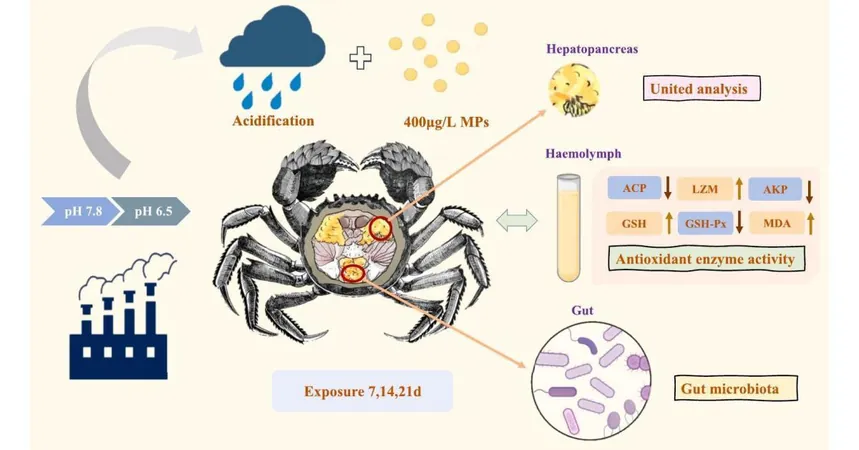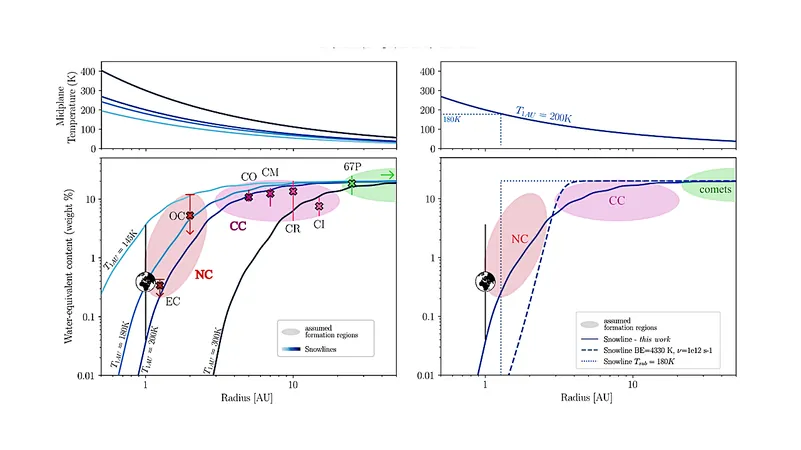
Microplastics and Acidic Waters: A Deadly Combination for Crabs
2025-06-12
Author: Mei
In a groundbreaking study, researchers have unveiled a shocking link between low pH levels and the toxicity of polystyrene microplastics in the Chinese mitten crab, *Eriocheir sinensis*. Conducted over 21 days, this research highlights the perilous effects these environmental stressors have when combined, endangering aquatic ecosystems.
A Dual Threat to Aquatic Life
Microplastics (MPs) and freshwater acidification are emerging as twin threats to our rivers and lakes. As global warming, unchecked urbanization, and rising plastic waste escalate, countless creatures are facing dire consequences. These microplastics, often formed through the degradation of larger plastic debris, are now omnipresent—especially in acidic environments where pH levels plummet due to increased carbon dioxide concentrations in the atmosphere.
The Study’s Jaw-Dropping Findings
The research conducted by a team led by Zhigang Yang reported several alarming findings. When crabs were exposed to both low pH levels (6.5) and MPs, the impacts were synergistic, leading to severe oxidative stress and immune suppression. Interestingly, while MPs alone disrupted the metabolism of pyrimidines, their toxicity skyrocketed in tandem with acidification, affecting critical metabolic pathways and gut microbiota.
Ecological Implications of Climate Change
Yang noted, "The global surface seawater pH has already dropped by 0.1 units since pre-industrial times, indicating a 30% increase in acidity. This spells disaster for aquatic ecosystems." The study used advanced techniques like enzyme activity assays and metabolomics to unravel these complex interactions, revealing how acidification intensifies the dangers posed by microplastics.
A Call for Further Research
The researchers urge a broader investigation into other common microplastic types, such as rubber and fibers, to better assess their ecological risks. This work lays the groundwork for understanding how climate change is unleashing a wave of toxicity in aquatic environments, emphasizing the urgent need for protective measures.


 Brasil (PT)
Brasil (PT)
 Canada (EN)
Canada (EN)
 Chile (ES)
Chile (ES)
 Česko (CS)
Česko (CS)
 대한민국 (KO)
대한민국 (KO)
 España (ES)
España (ES)
 France (FR)
France (FR)
 Hong Kong (EN)
Hong Kong (EN)
 Italia (IT)
Italia (IT)
 日本 (JA)
日本 (JA)
 Magyarország (HU)
Magyarország (HU)
 Norge (NO)
Norge (NO)
 Polska (PL)
Polska (PL)
 Schweiz (DE)
Schweiz (DE)
 Singapore (EN)
Singapore (EN)
 Sverige (SV)
Sverige (SV)
 Suomi (FI)
Suomi (FI)
 Türkiye (TR)
Türkiye (TR)
 الإمارات العربية المتحدة (AR)
الإمارات العربية المتحدة (AR)